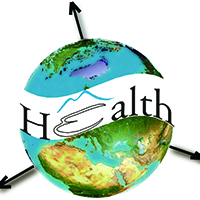The geo-spatial perspective of biological, social and environmental determinants of early pregnancy anaemia in rural Sri Lanka: Need for context-specific approaches on prevention

All claims expressed in this article are solely those of the authors and do not necessarily represent those of their affiliated organizations, or those of the publisher, the editors and the reviewers. Any product that may be evaluated in this article or claim that may be made by its manufacturer is not guaranteed or endorsed by the publisher.
Accepted: 4 November 2022
Authors
We provide a novel approach to understanding the multiple causations of maternal anaemia in a geospatial context, highlighting how genetics, environment and socioeconomic disparities at the micro-geographical level lead to the inequitable distribution of anaemia. All first-trimester pregnant women registered for the antenatal care programme in Anuradhapura District, Sri Lanka from July to September 2019 were invited to the Rajarata Pregnancy Cohort (RaPCo), which assessed the prevalence of anaemia in early pregnancy. The combination of the prevalence of anaemia and minor haemoglobinopathy-related anaemia (MHA) with the poverty headcount index of the 22 health divisions in the district was investigated using GeoDa spatial K-means clustering. Sociodemographic and economic data at the divisional level were compared between identified clusters. Combining the analysis with the geographical and environmental characteristics of the region, further hypotheses regarding anaemia in this community were formulated. The study included data from 3,137 pregnant women in early pregnancy. The anaemia and MHA prevalence varied from 13.6 to 21.7% and from 2.6% to 5%, respectively. We identified four distinct spatial clusters. The cluster with the highest anaemia prevalence also included high poverty and the highest prevalence of MHA. The clusters had significant differences with regard to ethnic distribution, access to water, sanitation and dietary patterns. Areas supplied by major irrigation projects had significantly low levels of anaemia, probably attributable to internal migration and improved livelihood. It was evident that genetic, socioeconomic and environmental risk factors were grouped at the divisional level, and that their complex interactions make controlling anaemia with blanket interventions unsuccessful. Analysis of the distribution of heterogeneous risk factors at the micro-geospatial level helped identify context-specific approaches to tackle anaemia in pregnancy.
Chair Professor, Department of Community Medicine
How to Cite

This work is licensed under a Creative Commons Attribution-NonCommercial 4.0 International License.








